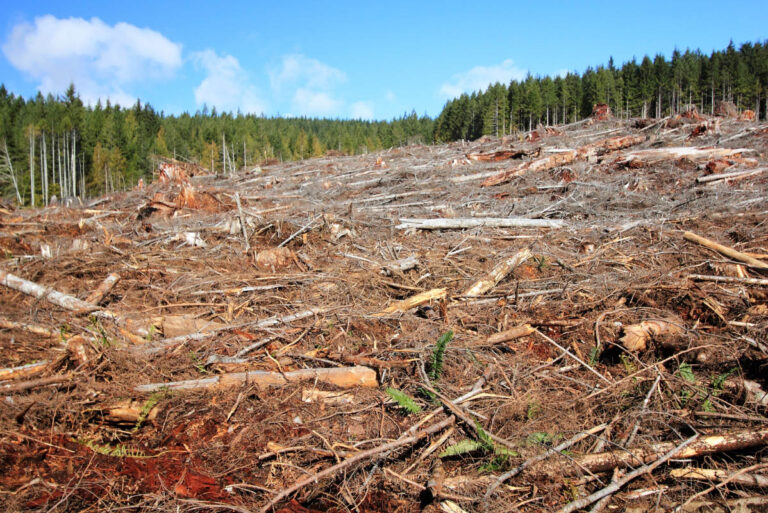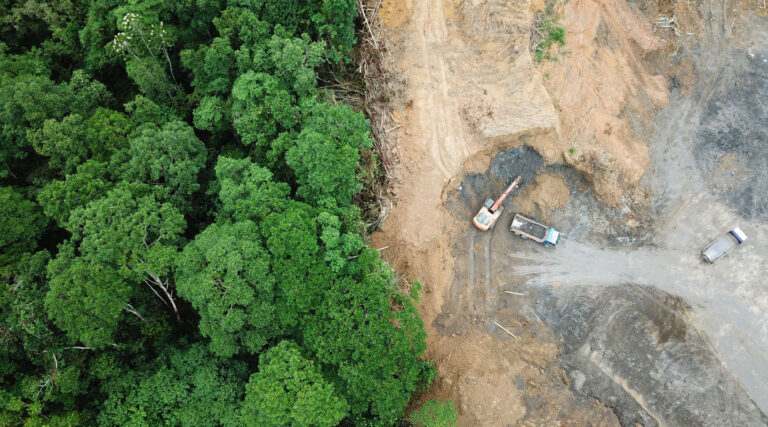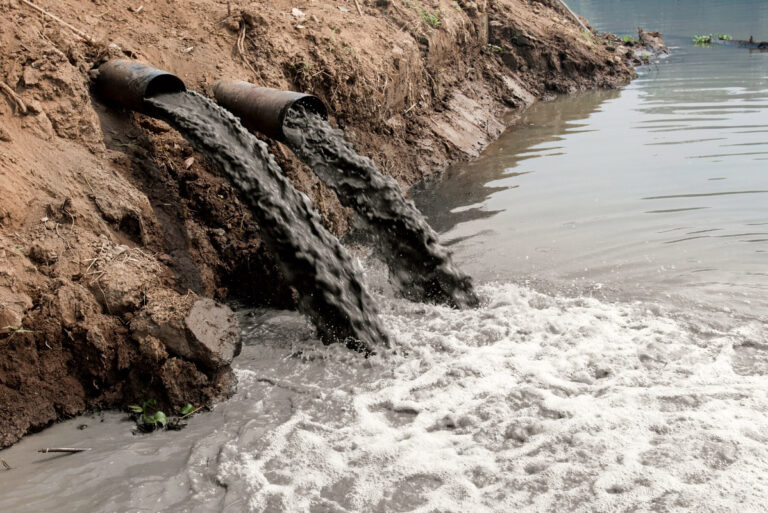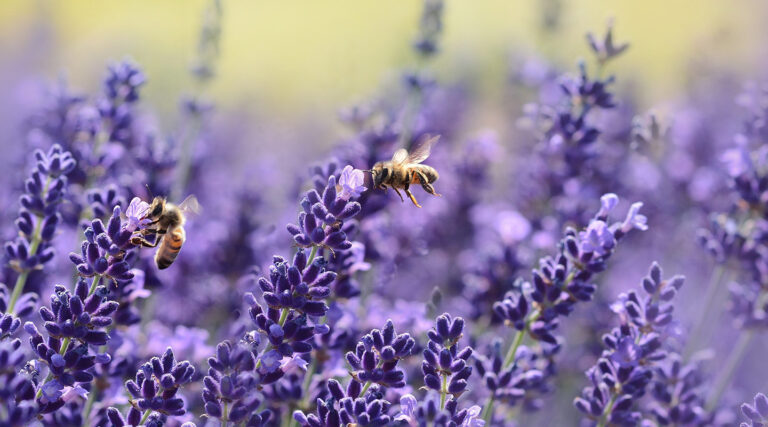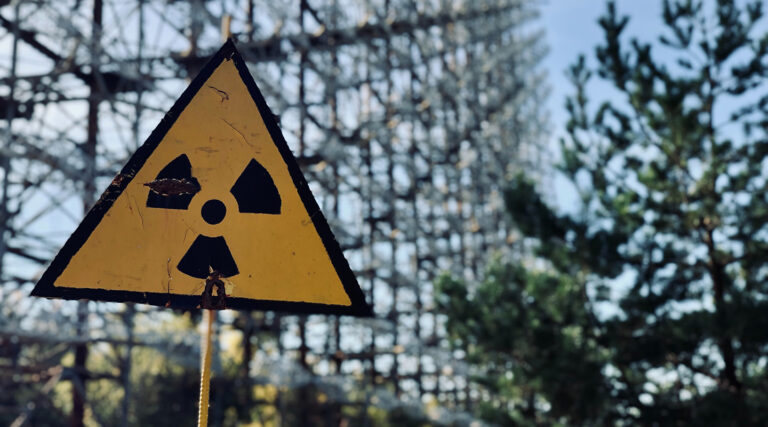It’s difficult to process the massive scale of global deforestation: almost 75% of tropical forests have already lost resilience. This means they’re no longer able to recover from drought or wildfire, and a massive 1.6 billion hectares of forests are currently at high risk of degradation.
The impacts of deforestation may seem pretty removed from our everyday lives, but the truth is, this destruction can directly affect people in a range of ways. If you’ve ever wondered “how does deforestation affect humans?”, keep reading!
What is deforestation?
Deforestation is the process of removing large amounts of trees over a significant area, essentially destroying complex ecosystems. The causes of deforestation can be natural, such as fires or floods, or they can be due to human activity.
Overwhelmingly, humans directly or indirectly account for the vast majority of historic and ongoing deforestation, most notably clearing land for agriculture, mining, and cities, as well as the legal and illegal logging industries and pollution.

Forests play a vital role in the health of our planet. They’re home to the majority of the earth’s plants and animals, regulate the world’s water supply, and act as massive carbon sinks, sequestering greenhouse gasses and protecting the planet from climate change.
As little as 10,000 years ago, most of the world – 71% of the planet’s land surface, a total of 10.6 billion hectares – was covered by forests, shrubs, and wild grasslands. Only around 38% or 4.1 billion hectares of this still exists, with the rest of this area being converted into crop fields, monoculture plantations, cities, landfill, or mining sites, or turned into wasteland because of pollution.
Furthermore, deforestation is continuing at a shocking pace: in 2021, we lost 10 million hectares, or 27 soccer fields per minute, globally. Unfortunately, as things stand there’s little sign of this slowing down.
How does deforestation affect humans?
The environmental impacts of deforestation are well documented, from loss of habitat and species extinction to desertification, water issues, and climate change.
However, many people don’t realize just how much deforestation can impact on people and our future.
It’s damaging to human health
Deforestation destroys the natural environment of many wild animals, which can put humans at risk when these animals go looking for food and shelter and up in populated areas. This can have devastating and dramatic effects, such as people being injured or even killed by wild animals: in 2014, tigers killed 17 people in India in just five weeks.
However, a much more prolific effect is the rise of zoonotic diseases, pathogens that spread from wild animals to people, partly because of increased contact, and partly due to other impacts of deforestation, such as the creation of ideal breeding environments for mosquitoes.
One study found that 1% loss in forest cover in an Indonesian village led to a 10% increase in malaria cases, while another linked Ebola outbreaks to recent deforestation which put people in contact with infected wild animals.
In 2021 alone, Malaria infected around 247 million people and killed 619,000, while the 2014-16 Ebola outbreak in Central and West Africa killed over 11,000 people.
Even the COVID-19 virus is believed to have originated from zoonotic origins. Though the exact circumstances are unclear, it’s not a leap to conclude that a similar pathogen and even a pandemic on the same scale could arise from animal migration due to deforestation.
In fact, recent SARS and Ebola epidemics originated from diseases spread by wild animals to humans, and researchers fear the next pandemic could originate from forest animals, driven by the destruction of their habitats.
It threatens indigenous communities’ way of life
Deforestation threatens the livelihoods of local communities, as well as the very way of life of indigenous peoples who have relied on forests for thousands of years.
Globally, indigenous communities are being displaced by logging and other human activities, or are finding that the land can no longer support them and their traditions because of deforestation and environmental degradation. For example, indigenous communities in the Amazon have faced displacement and violence because of deforestation and illegal logging.
It messes with the water cycle
Deforestation greatly impacts the water cycle, as trees play a vital role in regulating the water cycle. Therefore, removing them can cause water scarcity, drought, or flooding at the other end of the scale.
Trees take water from the ground using their roots and then release it into the air as water vapor, which forms clouds and ultimately falls to the earth as rain or snow.
Removing these trees can directly reduce the amount of rain, making surrounding areas more arid, and decreasing river flows. Furthermore, the impact can be felt over an extremely large area: experts predict that wide-spread deforestation in the Amazon could reduce rainfall in the USA.

Source: NOAA
Without enough water, people can’t grow food, or raise animals, and don’t have access to adequate sanitation. Experts even say that we could see conflicts over water as this resource becomes more scarce in the coming decades.
Forests also absorb rainwater and keep the soil in place during heavy rainfall. Therefore, when we remove these trees, it can cause devastating floods that destroy people’s property and even put their lives at risk.
For example, the devastating 2004 floods in Haiti that killed thousands of people have been linked to widespread deforestation across the island nation, which has cleared around 98% of its native forests.
It causes soil erosion
When forests are cleared, whether for crops, animal grazing, mining, or something else, this inevitably degrades the soil. Not only can these activities leech toxic chemicals into the soil and strip it of its nutrients, but without plant roots to hold it in place, whatever fertile soil is left can blow or wash away.
This leads to soil erosion, and, over time, means that we have less arable land to grow crops or support herd animals for meat and animal-based foods. Together with water scarcity, soil erosion, and degradation can cause mass food shortages and even famine.

It contributes to climate change
When we cut down forests, we lose valuable carbon sinks, releasing carbon dioxide into the atmosphere and accelerating climate change.
Climate change is predicted to have a range of devastating impacts on humans, including extreme weather events, food and water shortages, and generally making the planet that we call home less habitable. It could also have extreme economic impacts, with the Columbia Climate School predicting it could cost us $520 billion a year.
People all over the world have already begun to feel the impacts of climate change, with extreme weather events such as historic floods in Pakistan, record-breaking heat waves in Europe and famine in the Horn of Africa, in 2022 alone.
These are just a few examples, and unfortunately, things could get much worse if we don’t take action to reverse climate change, starting with protecting our forests.
What are the main causes of deforestation?
As the global population explodes and we need more resources to fuel our increasingly-demanding modern lives, these activities are accelerating, and with it, deforestation.
Agriculture and forestry
Large-scale agriculture has been and continues to be one of the main causes of deforestation around the world. According to the Food and Agriculture Organization (FAO), 40% of global tropical deforestation between 2000 and 2010 was caused by commercial agriculture.
Forests are cleared en masse to grow crops from wheat and corn to coffee and sugar, or graze livestock, as well as grow animal feed. This not only destroys forests in the short term, but it can make land unsuitable for future use: overgrazing can compact the soil and extract all of its nutrients, turning it into an eroded wasteland.
The palm oil industry is another major contributor to deforestation, especially in South East Asia. Palm oil has long been the world’s most popular vegetable oil, and is found in a large range of foodstuffs as well as personal care products, household items, and even biofuel.

Source: Wikimedia / NASA
This popularity has prompted producers to clear huge tracts of mostly tropical rainforest to plant oil palm plantations. According to the Say No to Palm Oil campaign, “every hour an area the size of 300 football fields” is cleared by the palm oil industry in Indonesia and Malaysia alone.
As the demand for palm oil continues, producers clear more rainforests to make room for more plantations, putting the Orangutan at risk of extinction, among other devastating impacts on the environment. This is one of the areas where consumers can directly help to prevent deforestation, by making an effort to choose palm oil-free products.
Finally, native forests are cleared to plant pine and eucalyptus to make paper and other wood products, from furniture to toilet paper. Although these monoculture plantations might be forests in one sense, they are not the same as their old growth counterparts: they aren’t effective habitats for native species, are not as effective at regulating the water supply, and are only about 40% as effective carbon sinks.
Urbanization
As the world’s population grows exponentially and becomes more industrialized, cities and urban environments are exploding.
As cities grow, so does their footprint, and so forests may be cleared to make way for houses, roads, and services. These buildings and infrastructure need materials, many of which are sourced from forestry and mining materials.

There are also some less obvious effects of urbanization: for example, urban communities tend to consume more than rural ones, and, in turn, produce more waste. They send much of this trash to landfill, so we need to clear forests and other natural environments to accommodate ever-growing landfills full of plastics that take hundreds or even thousands of years to break down.
Furthermore, landfill and other urban activities can contaminate the soil, which itself a cause of deforestation (more on this later). Finally, people living in cities are less likely to grow some or all of their own food, relying on large-scale agriculture instead.
Illegal logging
Illegal logging can also lead to deforestation when companies cut down valuable, sometimes ancient trees to sell their timber. It’s estimated that between 15 and 30% of all of the world’s timber is illegally logged, which is why it’s essential to only buy sustainably-sourced wood.
Illegal logging is occurring on a large scale and can be driven by recognized businesses and organizations. In 2009, whistleblowers revealed that the world’s largest meat producer, Brazilian company JBS was illegally cutting down protected areas in the Amazon to graze their cattle.
The company’s staggering response was to pledge to eliminate deforestation from its supply chain, but only by 2035.
Mining
Even though most mining activities happen underground, they can have devastating impacts above the earth’s surface. The mining industry clears swathes of land to support its operations and infrastructure, as well as polluting the soil and waterways, which can make both toxic and destroy all kinds of natural environments, including forests.
Furthermore, some materials are sourced using open-cut mines, which can involve clearing large tracts of native vegetation.

Forest fires
Forest fires have been a natural part of many ecosystems for thousands of years, helping ecosystems to regenerate. However, fires lit by people, whether accidentally or intentionally, combined with increasingly harsh environmental conditions due to climate change, means that we’re seeing unprecedented wildfires that are contributing to deforestation, such as those in California in 2021.
At the same time, the practice of slash-and-burn agriculture, where fire is used to clear land and try to rejuvenate overworked soil, saw over 33,000 illegal fires in the Amazon basin in August 2022 alone.
Soil pollution and desertification
It may sound obvious, but forests rely on the soil to grow and thrive. Soil contamination is a huge issue, with the use of chemical fertilizers and pesticides in agriculture, pollution from mining and industrial activities, as well as spills and accidents delivering a range of toxic materials to the ground.
This can poison the earth and destroy forests fairly quickly, or threaten the health of the ecosystem over time. This becomes a vicious cycle: as the soil is contaminated, it becomes unable to support plant life.
Read these posts to learn more about soil pollution and how it can be prevented.
Wrapping up
So, how does deforestation affect humans? From driving disease and food insecurity to causing flooding, droughts, and other natural disasters, deforestation is already having a range of devastating impacts on people.
Thankfully, there are plenty of things you can do to prevent deforestation, such as:
- Buying certified wood products, wood alternatives, or second hand, and cutting use of paper
- Cutting your waste by recycling, reusing, composting, and opting for zero-waste products
- Shopping for palm oil-free, organic, and sustainably sourced products
- Lobbying your representatives for tougher legislation on illegal logging, as well as farming, forestry, and mining that causes deforestation
- Support organizations and campaigns that protect forests and plant more trees
For more ideas, take a look at our post on how to protect forests.
